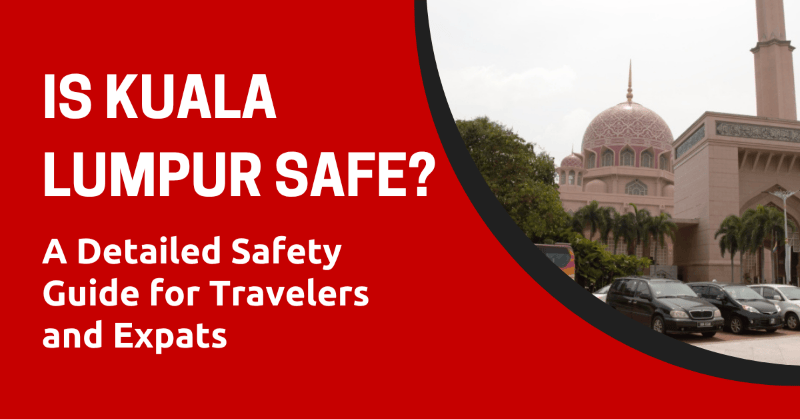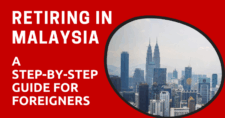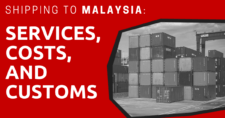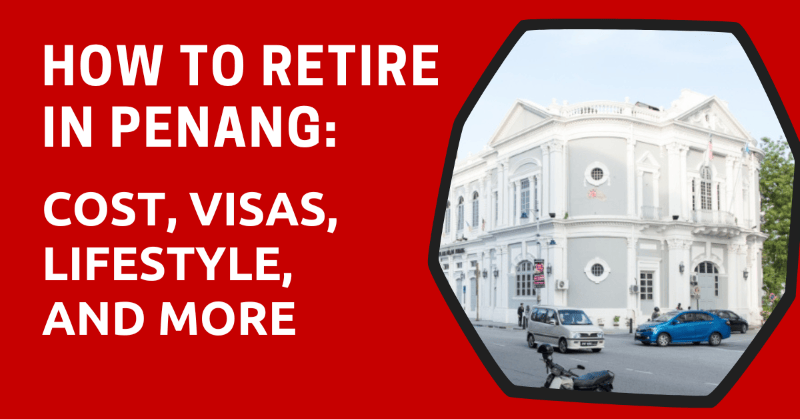
Thinking about retiring in Penang, Malaysia? This complete guide covers visas, cost of living, healthcare, safety, housing, and real expat insights to help you decide.
When I looked for the best place to retire in Southeast Asia, Penang kept popping up in conversations with friends, on expat forums, and even in casual chats with travelers I met along the way.
I’ve been there before, and I know why many retirees choose Penang over other Malaysian cities. Penang has many great factors for retirees: affordable cost of living, great food scene, good healthcare and infrastructure, and more.
In this guide, I’m going to walk you through what it’s really like to retire in Penang, the pros and cons you should know before moving, how it compares to other cities, and the kind of budget you’ll need.
This article is written based on my experience traveling there. I also did in-depth research on various expat communities and asked for real opinions from expats who are actually living in Penang.
This article will take approximately 32 minutes to read. Don't have the time right now? No worries. Email the ad-free version of the article to yourself and read it later!
Disclaimer: This article may include links to products or services offered by ExpatDen's partners, which give us commissions when you click on them. Although this may influence how they appear in the text, we only recommend solutions that we would use in your situation. Read more in our Advertising Disclosure.
Contents
- Why Retire in Penang
- Challenges of Retiring in Penang
- Is It Safe to Retire in Penang?
- What Daily Life in Penang Feels Like
- Cost of Living in Penang for Retirees
- Best Areas to Live in Penang for Retirees
- Visa Options for Retirees in Penang
- Finance
- Health
- Health Insurance in Penang
- Accommodation in Penang
- Getting Around in Penang
- Food in Penang
- Who Should Retire in Penang
- Who Shouldn’t Retire in Penang
- Your Penang Move Checklist
- FAQs About Retiring in Penang
- Penang vs. Other Malaysian Cities for Retirement
- Alternative Option
Why Retire in Penang
First thing first, let’s take a look at key reasons why you should retire in Penang.
Quality of Life
The very first thing people often told me about retiring in Penang is that you get the perfect mix of easy life and city convenience. You get a relaxed, small-town atmosphere with a traditional way of life, yet you’re still only minutes away from modern shopping malls, hospitals, and supermarkets. You don’t have to choose between old-world charm and modern convenience. You can have both.
The quality of accommodation is also a big part of the draw. You can find spacious, modern condos with pools, gyms, and 24-hour security for a fraction of what you’d pay in many Western countries.
And if you want familiar comforts, Penang delivers: imported foods, international dining, and specialty stores are easy to find
Food
The very first memory I have about Penang is the food. I can still remember the taste of a seafood noodle cooked by a Chinese grandma at a small street stall, simple, fresh, and full of flavor. Coming from Bangkok with a Chinese background, I honestly think some of the street food here can rival, if not beat, what you find in Bangkok. It’s a perfect blend of Chinese and Malay cooking: not so spicy, but flavorful.
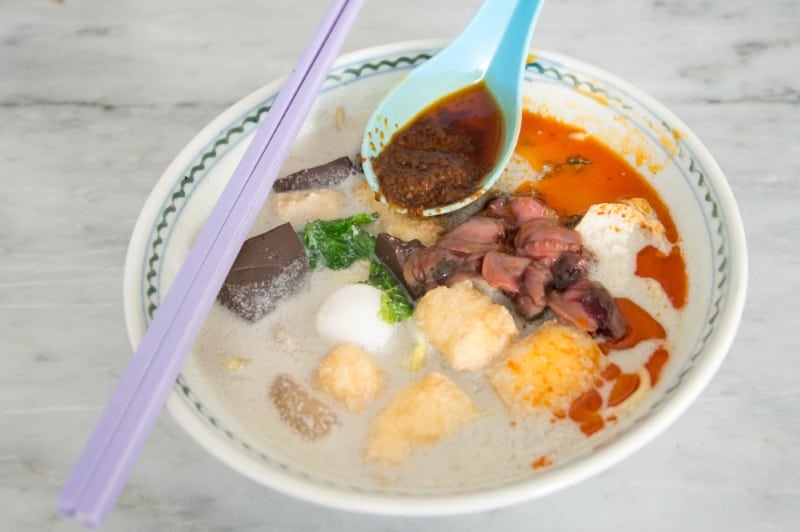
The street food culture here is a big part of daily life, with dishes like char kway teow, assam laksa, and nasi kandar always on the menu. Hawker centers buzz from morning until late at night, and it’s normal to eat out multiple times a day without spending much.
Of course, there’s a downside. International restaurants are available, from Italian to Japanese, but they can be hit-or-miss. Western food, in particular, is often mediocre and pricey. As one expat on reddit put it, “Forget Mexican food.”
If you enjoy Chinese flavors without the heavy oiliness like me, Penang can be a true food paradise.
Healthcare
The healthcare in Penang is also great. Many doctors and specialists are Western-trained, with qualifications and experience from the UK, Australia, or the US. The system is both efficient and affordable.
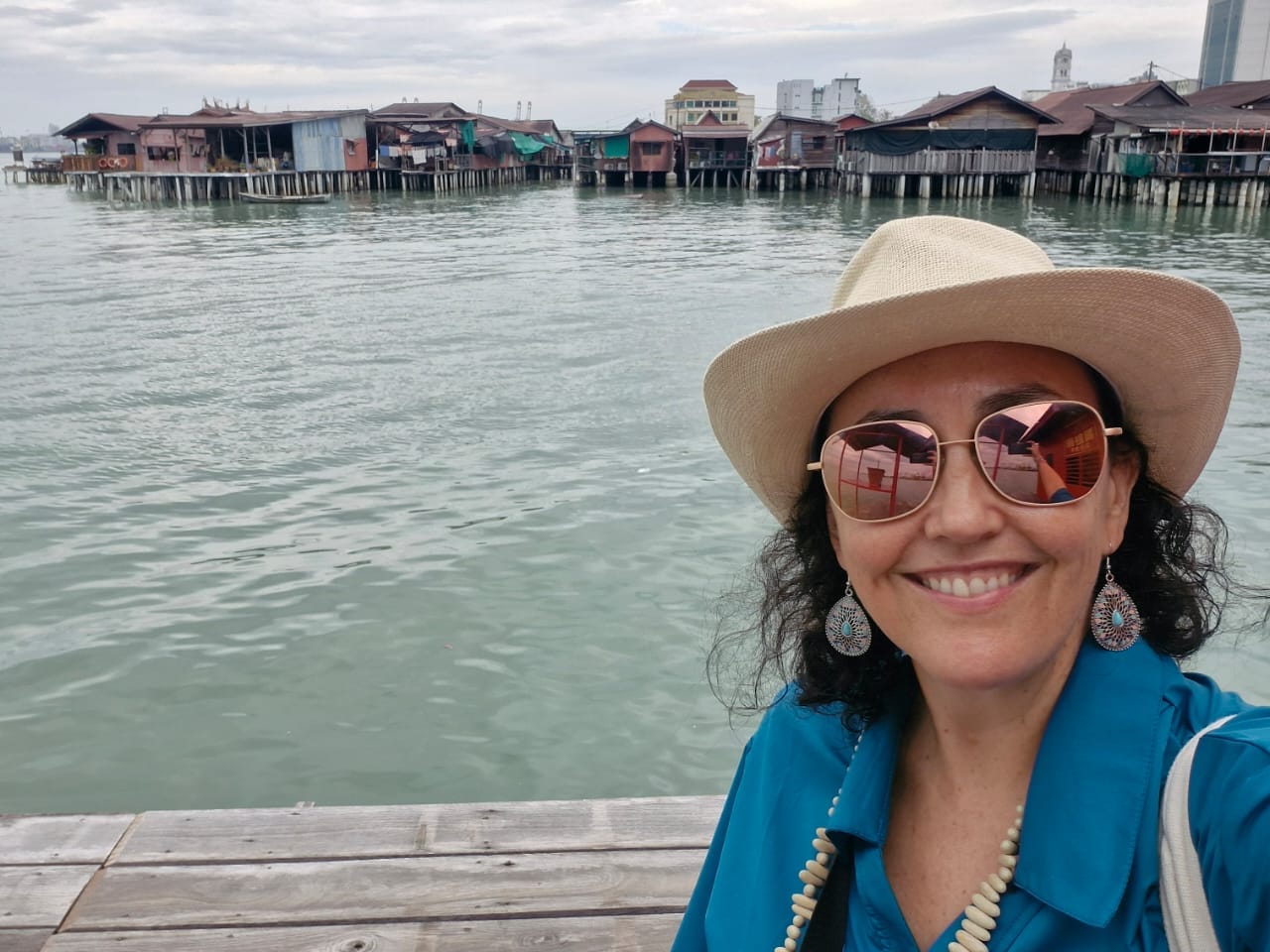
The healthcare is (in Penang) excellent. Expect western trained specialists (many studied and practiced in the UK, Australia or the US) and a super efficient and affordable system.
Kelly Quinn, expat Mum and founder of International Teaching Families.
You can get a full health check-up for less than US$200, and if you see a specialist, any necessary tests are usually done on the spot. There’s no long waiting list or drawn-out referral process.
Popular hospitals among expats include Penang Adventist Hospital, Gleneagles Penang, and Island Hospital.
Cultural Diversity
Malaysia is a multicultural country, and Penang is no exception. You’ll see Malay, Chinese, Indian, and other communities living together in harmony. Mosques, Chinese clan houses, Christian churches, Hindu temples, and more all share the same neighborhoods.
This diversity means locals are generally welcoming to people from different cultures, making it easier to adapt here than in many other parts of Southeast Asia, and even other parts of Malaysia.
The expat community is just as varied. You’ll meet retirees, teachers, and digital nomads from Australia, New Zealand, the UK, the U.S., and beyond. That mix makes it easy to find people with similar backgrounds or interests, while still having plenty of opportunities to branch out and build connections with locals.
Language
This is another great thing about living in Penang. English is widely spoken, especially in workplaces, government offices, and expat-friendly neighborhoods. Of course, grandma and grandad at the mom-and-pop shop on the street might not speak much English, but younger people and service providers usually can.
Even practical matters like lease contracts, banking, and hospital paperwork are often in English, and in good English, not the broken, Google-translated kind I’ve sometimes seen in Bangkok.
This means you won’t need to learn a new language to live here comfortably.
Challenges of Retiring in Penang
Like any city, Penang isn’t perfect. Here are some of the challenges you might face when living here.
Visa
Visa is a challenge not just in Penang but across Malaysia. The country has one of the higher financial requirements in Asia for a retiree visa. For example, the Malaysia My Second Home (MM2H) program requires a minimum fixed deposit of around RM675,000 (~US$150,000), and not everyone has that amount of money readily available.
You can see the full visa requirements from the Malaysia My Second Home (MM2H) official website.
Getting Around
The first time I visited, I happily rented a bicycle and rode all over the city. But that’s really just for tourists. It doesn’t work so well if you actually live here. Penang is hot and humid, and you’ll be soaked in sweat within 15 minutes of cycling.
Traffic can also be a major headache. It’s one of the biggest complaints from both locals and expats. To get around conveniently, you’ll need a scooter or an electric bike. But do note that roads in George Town aren’t always efficient, with many one-way streets making a missed turn surprisingly costly in time.
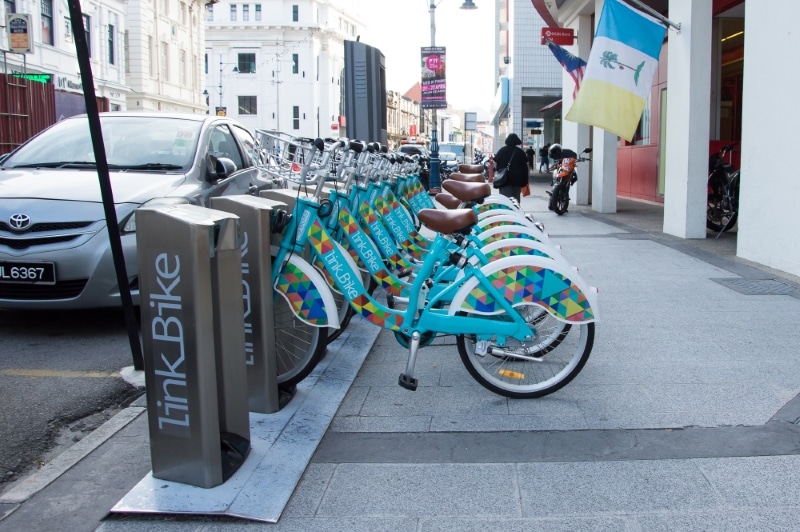
Parking can be tough to find in busy areas, and public transport is limited. Walkways are inconsistent too, except in areas like Gurney Drive. The LinkBike public bicycle system is mostly useful around the Gurney–Pulau Tikus corridor, but not so much for everyday errands.
On top of that, traffic accidents are common, especially involving motorcycles that weave through lanes at high speed without much regard for pedestrians crossing the street.
On the plus side, ride-hailing apps like Grab are widely used and affordable. Many expats rely on them instead of owning a car, especially if they live in more central areas.
Weather
According to Malaysian Meteorological Department, Penang is hot and humid with an average daytime temperature of 32 °C (90 °F) throughout the year. You can start sweating within 10 minutes of walking outside during the day. It also rains a lot during the rainy season between September and December.
To me, this is quite common across Southeast Asia. Affordable destinations often come with hot, humid weather and frequent rain.
“It seems like a minor thing, but a lot of people are quite shocked at the tropical heat and don’t realize how careful you have to be with the sun and hydration and things like that” Ellen Eggers, a retiree in Penang told Business Insiders.
On the plus side, Penang doesn’t experience typhoons or severe natural disasters like in the Philippines.
Haze
This is another common problem for Indonesia, Malaysia, and Singapore. There’s often haze from Indonesian forest fires during August to October. According to IQair.com, PM2.5 levels can exceed 55 µg/m³ during bad haze periods, pushing the AQI above 150 (unhealthy).
During heavy haze, you should wear a mask or limit outdoor activities.
However, on the other day, air quality in Penang is quite good, which is usually between 20–50 AQI.This issue also affects
Beaches
While it’s an island, Penang is not a beach paradise. You can still find nice views in Batu Ferringhi and Tanjung Bungah, but the water quality isn’t great, jellyfish are common, and pollution can be a concern, especially after heavy rains. It’s pleasant to look at, but swimming isn’t always recommended.
Is It Safe to Retire in Penang?
Yes, Penang is generally very safe. It’s considered one of the safest cities in both Malaysia and Asia. Many retirees, including single women, choose to live here and feel comfortable going about their daily lives without concern.
The only thing you should be careful about is road safety, especially with motorcycles. Always look twice for them before crossing the street, as riders may appear suddenly from either direction.
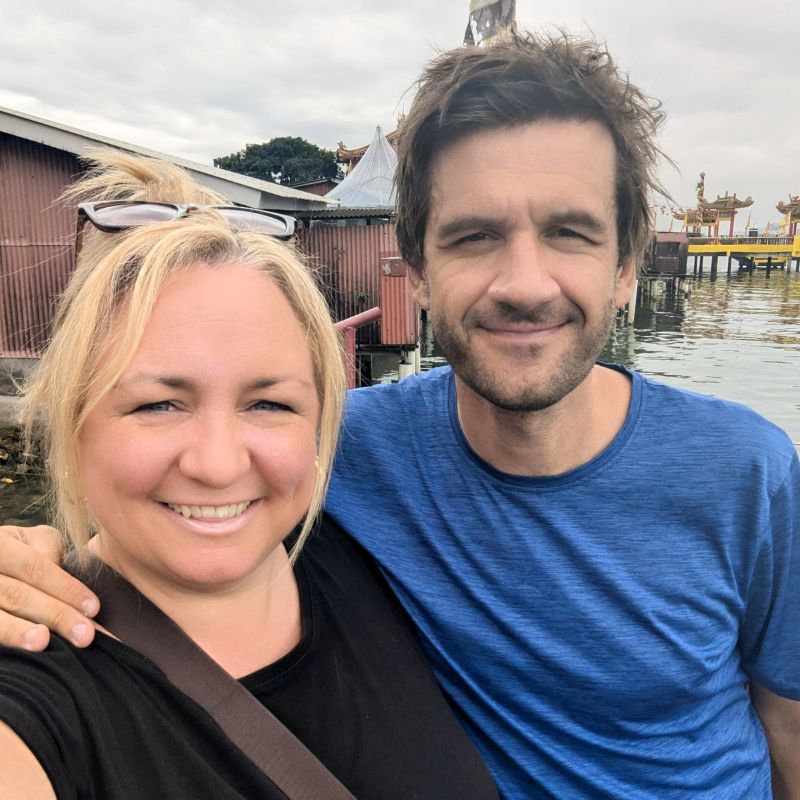
Penang is an extremely safe place to live, with next-to-zero levels of crime, friendly locals accustomed to new arrivals, and English widely spoken and understood.
Jenny Lynn and Jason Lynn, Founders of On Penang
You can read more in our Is Penang Safe? guide.
What Daily Life in Penang Feels Like
Life in Penang has a relaxed, small-town feel, even though you still get the conveniences of a city. Mornings often start with a walk and grab a coffee at a cafe chatting with your retiree friends. You can also pick up breakfast from your favorite hawker stall.
By midday, it’s going to be quite hot to go outside. So, you can just relax inside a cafe or duck into an air-conditioned mall for a while. On some days, you might take a short drive to Batu Ferringhi or Tanjung Bungah, not necessarily to swim, but to sit by the water with a book and a cold drink.
Evenings are when Penang comes alive, with night markets, live music spots, and countless small restaurants where you know the food will be good.
Weekends also don’t feel rushed here. So, the retirement life is about enjoying simple routines but you still have access to modern conveniences whenever you need it.
Cost of Living in Penang for Retirees
One of the biggest reasons retirees choose Penang over other destinations is its relatively affordable cost of living for the lifestyle you get. You can live comfortably here on a budget starting from around RM4,000–7,500 per month (US$840–1,580) as a single retiree, depending on your housing and dining choices.
Couples often find they can live well for under RM9,000 per month (US$1,890).
Here’s a rough breakdown of average starting monthly expenses for a single retiree:
- Rent: RM1,500–3,000 (US$320–640) for a normal condo.
- Food: RM1,000–1,500 (US$215–320) if eating mostly local; replicating a Western diet will push costs higher
- Transport: RM300–500 (US$65–110) if car-free and relying on Grab or public transport
- Utilities & Internet: RM300–400 (US$65–85)
- Healthcare & Insurance: RM300–800 (US$65–170)
- Entertainment & Miscellaneous: RM500–1,000 (US$110–215)
Total: RM3,900–7,200 per month (US$820–1,520)
For a real-world example, one couple under the old MM2H visa shared their detailed budget after two years in Penang on reddit. They rent an oversized luxury seafront condo for RM7,500/month (US$1,580), which is breezy enough that they rarely need air-conditioning. They eat mostly local produce, avoid replicating a Western diet, and do not own a car, instead relying on public transport, electric bikes, and Grab.
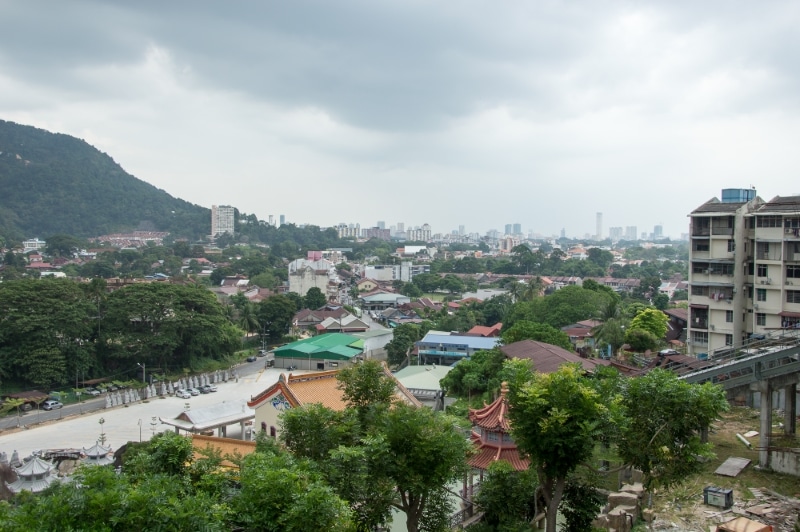
Their 2024 average monthly expenses came to RM13,500 (US$2,840), up from RM11,500 (US$2,420) two years prior due to higher rent, grocery prices, and medical costs for their elderly cat. Here’s their monthly breakdown:
- Rent: RM7,500 (US$1,580)
- Groceries: RM1,920 (US$405)
- Eating Out: RM918 (US$193)
- Routine Medical: RM464 (US$98)
- Pet Care: RM669 (US$141)
- Transportation: RM413 (US$87)
- Communication: RM243 (US$51)
- Social Activities: RM175 (US$37)
- Utilities: RM181 (US$38)
- Subscriptions: RM56 (US$12)
- Other: RM964 (US$203)
Total: RM13,503 (US$2,844)
To put it simply, you should plan to have around US$1,000 (RM4,700) per person per month to live here affordably.
If you have a bigger budget, you can upgrade your lifestyle, for example, renting a luxury seafront condo like the one featured in the Reddit example above.
Related article: Cost of Living in Malaysia: How Much Do Expats Need Per Month?
Best Areas to Live in Penang for Retirees
While it’s an island, Penang has plenty of neighborhoods to choose from. Most expats end up living on the east coast because that’s where you’ll find the most convenient areas: close to shops, hospitals, and social spots. Here are some of the most popular picks.
George Town
If you like history, culture, and walkable streets, George Town is the place. It’s full of heritage shophouses, street art, cafés, and small museums. You can live right in the middle of everything and walk to most places. But there’s a catch: traffic, parking, and weekend crowds can be frustrating.
Also, the cost of accommodation in George Town can be higher than other areas.
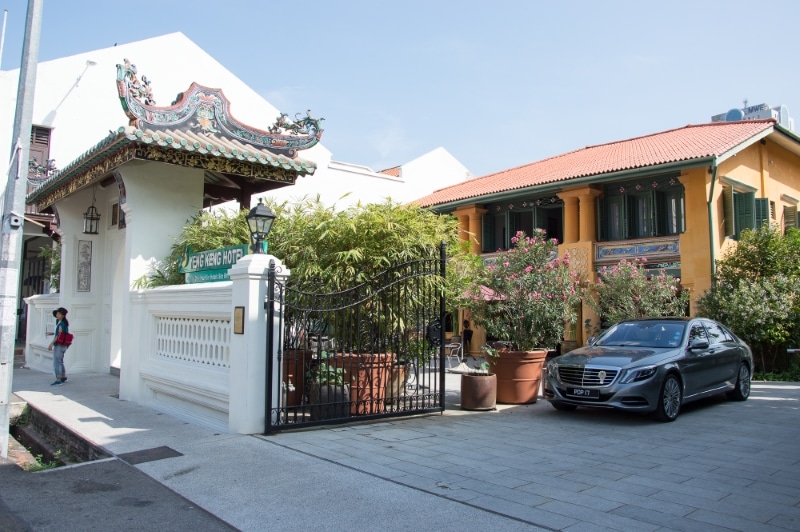
Tanjung Tokong
Just a short drive from George Town, Tanjung Tokong has a more modern, suburban feel. You’ll find upscale condos, malls, and the Straits Quay Marina. It’s popular with retirees who want a balance between city convenience and a quieter home base.
Tanjung Bungah
About 15 minutes from the city, Tanjung Bungah is a nice mix of beach and city living. It’s family-friendly, has a good number of international schools, and a decent expat community. You can find nice apartments here without paying George Town prices.
Batu Ferringhi
Further up the coast, Batu Ferringhi is all about the beach. It feels more like a resort town, with long stretches of sand, sunset views, and a night market. Great for a relaxed lifestyle, but you’ll be farther from the main city and most errands will take a bit longer.
Gelugor
If you want something more affordable but still convenient, Gelugor could work. It’s close to the bridge to the mainland, has easy access to main roads, and is a good middle ground between cost and location.
In short:
- George Town if you want heritage and walkability
- Tanjung Tokong or Tanjung Bungah for coastal living with city access
- Batu Ferringhi for a quiet beach vibe
- Gelugor for value and convenience
Best Neighborhood Summary
| Area | Highlights | Notes |
| George Town | Heritage charm, walkable, cultural hub | Busy and faces parking/traffic limitations |
| Tanjung Tokong | Suburban, marina, upscale | Modern living, well-connected |
| Tanjung Bungah | Beach access, international schools, expat-friendly | Family-oriented, lower traffic |
| Batu Ferringhi | Resort feel, scenic, relaxed | Farther from city services |
| Gelugor | Affordable, central, improving infrastructure | Good mix of local and expat communities |
Visa Options for Retirees in Penang
Visa is the main trade-off in Penang since it comes with one of the highest financial requirements in Asia.
The main option for retirees is the Malaysia My Second Home (MM2H) program. It’s a long-term visa valid for up to 10 years, but it requires a minimum fixed deposit of about RM675,000 (~US$150,000). You can withdraw up to 50% of that for approved expenses such as medical care, education, or property purchases, but the upfront requirement is still steep, and not many retirees can meet it.
For comparison, Thailand’s retirement visa only requires THB800,000 (US$22,000) , about five times lower than MM2H’s deposit.

Many retirees consider Penang their own tropical paradise, a place where their retirement budget can stretch much further thanks to the abundance of cheap apartments, world-class food options at bargain prices and an overall low cost of living.
Jenny Lynn and Jason Lynn, Founders of On Penang
Another option is the Sarawak-MM2H (S-MM2H) program. Its financial requirements are a bit lower, but you must spend at least one month per year in Sarawak, and your fixed deposit must be in a Sarawak-based bank, which isn’t the most convenient if you live in Penang.
Some retirees also stay on employment or marriage visas, but those depend on your work situation or marital status and aren’t open to everyone.
You can read our in-depth guide to a retirement visa in Malaysia for more details.
Finance
Finance in Penang is generally straightforward, especially if you’re on the Malaysia My Second Home (MM2H) program, since most banks are familiar with opening accounts for MM2H holders. Maybank and CIMB Bank are most popular for retirees in Penang.
I recommend keeping your fixed deposit account for visa purposes in a Malaysian bank and opening a separate account for daily spending. You can then transfer money into that account and use online banking for payments and transfers.
Cashless payment is becoming more popular in Malaysia. You can use e-wallets like Touch ‘n Go (topped up via your bank account) and GrabPay to pay for convenience stores, supermarkets, ride-hailing, and some restaurants.
Credit and debit cards are also widely accepted in malls, larger supermarkets, and many mid- to high-end restaurants. Still, it’s a good idea to keep some cash on hand, as smaller shops and street vendors may only accept cash.
Good to know: One of the perks of living here is that foreign income from pensions or investments is tax-free if it’s brought into Malaysia.
Health
If you get sick in Penang, you won’t have trouble finding good care. The island has both public and private hospitals, and most doctors speak English.
For public care, Penang General Hospital is the main government hospital. It’s cheap and the doctors are competent, but the wait can be long. Even locals complain about it.
Most retirees end up using private hospitals instead. The most popular are Gleneagles, Island Hospital, Penang Adventist, Lam Wah Ee, and Pantai. Lam Wah Ee is one of the more affordable private options. Gleneagles is more expensive but has modern facilities and shorter waits. Adventist, Island, and Pantai are also very good and meet international standards. Many doctors here trained in the UK, US, or Australia.
If it’s something minor, like a cold or flu, you can walk into a local clinic and see a doctor right away. A visit usually costs RM40–150, and you’ll often leave with your medication on the same day. Pharmacies are everywhere, and for common meds, you can usually just walk in and buy them without a repeat prescription.
Overall, Penang’s hospital scene is good. You can get fast, high-quality treatment at a fraction of what it costs in the West, and you don’t have to worry about language barriers.
Health Insurance in Penang
Healthcare in Penang is affordable compared to many Western countries, but it’s still a good idea to have health insurance, especially for unexpected emergencies or major treatments.
You’ll find plenty of options, from local providers like Prudential, AIA, and Great Eastern to international expat insurers such as Cigna Healthcare, Allianz, and AXA.
As a rough guide, a mid-level local plan costs around RM3,000–5,000 per year per person, international policies usually cost more but often provide wider coverage, including treatment outside Malaysia.
If you want to compare plans and see what fits your needs, check out our full guide to health insurance in Malaysia.
Accommodation in Penang
Sea-view condos or beachfront apartments are the most popular choice here. While Penang’s beaches aren’t as impressive as places like Phuket, Thailand, the cost of living, and the price of renting a sea-view apartment, is much lower.
They are also often close to food, shopping, and daily conveniences.

The lifestyle in Penang is super easy. English is widely spoken, the quality of accommodation is high (and affordable) and you can access many Western comforts (like imported foods) that ensure a high quality of life.
Kelly Quinn, expat Mum and founder of International Teaching Families.
You can expect to pay around RM2,000–2,600/month for a sea-view unit. I checked PropertyGuru’s Penang rentals and found plenty of options in this price range, including several in Tanjung Tokong, Gurney Drive, and Batu Ferringhi.
For example, a recent listing at Mar Vista Duplex in Batu Ferringhi offers a 3-bedroom, 3-bathroom unit with panoramic sea views for RM2,000/month. Another option, Queens Residences @ Queens Waterfront, has waterfront units starting from RM2,500/month.
When it comes to real-world examples, a New Zealander retiree, Jill Tozer, told Business Insider she rent a three-bedroom sea-view condo in Tanjung Tokong for around US$450/month (~RM2,100)
Another person on Reddit said that he rented a three-bedroom, three-bathroom sea-view condo near downtown for about US$750 (~RM3,400).
There are some good to know information about renting a property in Penang:
- It’s hard to find short-term rent. Most rentals are one-year contracts. If you need to find a short-term rental, use AirBNB.
- Negotiation is common. In fact, many landlords start with a high asking price knowing you’ll negotiate.
- If you’re on a tighter budget: Use local sites like mudah.my or ibilik.my where you may find cheaper rooms compared to international property sites.
Getting Around in Penang
Many retirees in Penang don’t want to own a car since they’d rather avoid the hassles of ownership, traffic, and parking, which can be especially hard to find in the heritage area.
Instead, they often buy electric bikes, which are becoming more popular in Penang. You can get one for around RM2,500–RM5,500. Just be careful though, motorbike and e-bike riders here don’t always follow traffic rules. I recommend riding passively, staying visible, and keeping safety as your top priority.
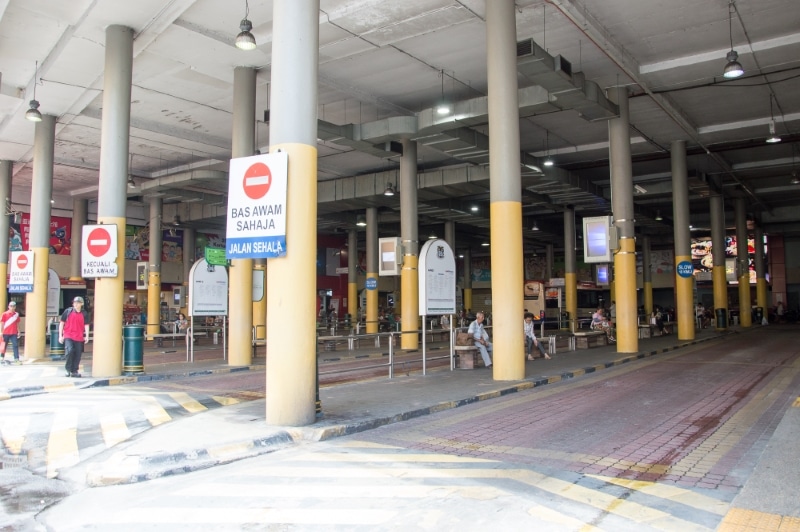
If you don’t want to ride a bike, you can use Grab. It’s another main choice for retirees here. It’s convenient, reliable, and you can get almost anywhere on the island without owning a car. And you can pay it cashless.
Alternatively, if you’re on a budget, you can take a bus. It’s very cheap and covers most key areas. However, routes and schedules are limited.
Or you can rent a bicycle from LinkBike, which is available in certain parts of George Town and Gurney, but it’s really more for tourists.
Food in Penang
I really like the food in Penang. It’s a mix of Malay and Chinese food, and a lot of it feels like a home cooked meal. In addition, you can find it everywhere, and it’s cheap. Each meal can cost you only around RM6–RM10.
You can expect a lot of noodle and rice dishes with various meats, seafood, and vegetables. Stir-fried noodles like char kway teow are also common here.
In addition, I’ve found the Indian food in Penang to be great too. It’s a good choice when you want a change of flavor.
Here’s some popular dish in Penang and where to eat:
- Laksa – Kim Laksa in Balik Pulau (asam and lemak laksa). Granny Q Laksa in Pulau Tikus is another favorite.
- Char kway teow – Try the crab and duck egg version at Oriental Food Forest in Bayan Lepas.
- Dim sum – Restoran Zim Sum (Jalan Macalister), Fu Er Dai (Jalan Sultan Ahmad Shah), Maxim Dim Sum (Lebuh Pekaka).
- Cendol – Penang Road Famous Teochew Cendol (Lebuh Kweng Kee). Mall branches cost more.
- Chinese “sze char” – Tek Sen Restaurant (Lebuh Carnavon) and Tek Sen Express (Bayan Lepas).
- Pastries – Tau sar pneah from Him Heang, Ghee Hiang, Tean Ean, or Ban Heang.
- Other – Loh Mee at Joo Huat Kopitiam (Jalan Perak), chee cheong fun at Genting Cafe, duck broth noodles at Kimberly Street.
Malay food
- Nasi lemak – Rasa Rasa is a solid choice.
- Mee goreng sotong – Padang Kota is the go-to.
- Mee udang – Found at various hawker stalls around the island.
- Pasembur – Stall No.8 at Batu Lancang Market.
- Hawker centers – Sri Weld Food Court and New World Park have a mix of Malay and Chinese options.
Indian food
- Nasi kandar – Found everywhere; look for busy shops for the freshest curries.
- Northern Indian cuisine – Sri Ananda Bahwan.
- Indian Muslim favorites – Roti canai, murtabak, and teh tarik at Restoran Kayu (a bit pricey).
- Authentic Indian meals – Chettiar’s Cafe in Little India is highly recommended.
- Specialty – The chicken kofta at Iskender Turkish & Arabic Kitchen is worth trying (Middle Eastern influence, but popular among the Indian Muslim community here).
There are also many good sit-down restaurants in Penang, but the majority are Chinese restaurants like Starview and Chinese Recreation Club (CRC).
In addition, the street food here is arguably one of the best in Asia. On the other hand, the international food scene isn’t that good. While you can find Western, Japanese, or Korean spots, variety and authenticity don’t match bigger cities like Kuala Lumpur or Bangkok.
Who Should Retire in Penang
To help you quickly decide whether Penang might be the right retirement destination for you, here’s my take on who would enjoy living here.
Penang can be a great choice if you:
- Have enough financial resources to qualify for the Malaysia My Second Home (MM2H) visa
- Want to live by the beach and enjoy sea views
- Prefer a relaxed, easy lifestyle without too much adventure
- Value living in a safe city with reliable infrastructure
- Don’t want to learn a new language, as English is widely spoken here
- Want access to good healthcare, including private hospitals that meet international standards
- Are okay with hot and humid weather year-round
- Want an affordable cost of living compared to many Western countries
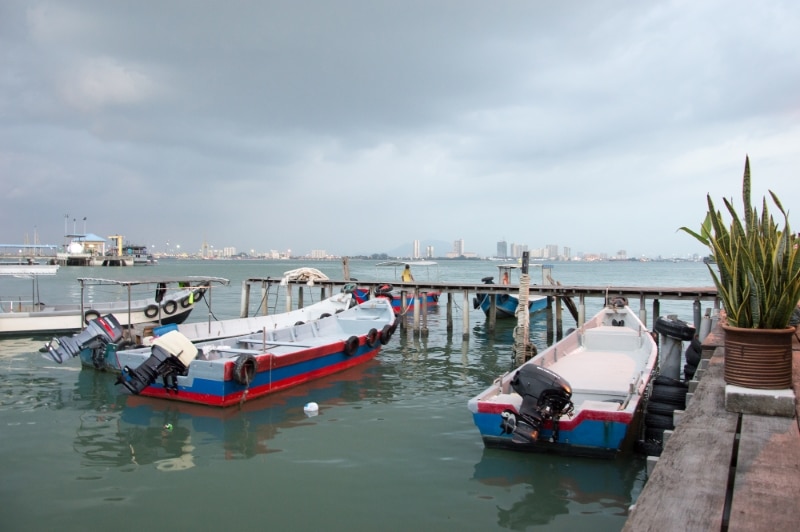
Who Shouldn’t Retire in Penang
While Penang has a lot going for it, it’s not the right fit for everyone. If you fall into any of these categories, you may want to consider other destinations.
Penang might not be for you if you:
- Can’t qualify for a long-term visa like the Malaysia My Second Home (MM2H) program, as it’s currently a major requirement for staying here long-term
- Prefer a very active lifestyle with endless things to do. Penang is more about slow living
- Need cooler weather year-round, as Penang is hot and humid most of the time
- Want world-class beaches right outside your door. Beaches in Penang aren’t as great as places like Phuket or Bali
- Plan to eat international cuisine regularly, as the international food scene here is smaller and more expensive than in bigger cities
Your Penang Move Checklist
Before you pack your bags for Penang, here are a few things you should do first:
- Check visa requirements – The MM2H visa requirements are high, so make sure you qualify before making any big plans. It’s not for everyone.
- Visit during the rainy season – Penang rains a lot, and when it rains, it can rain heavily. See if you’re okay with the weather before committing.
- Test the food scene – Stay long enough to try different places and see if the local food suits you. Some people really miss the taste of home after a while.
- Explore different neighborhoods – Travel between areas like George Town, Tanjung Bungah, and Batu Ferringhi to get a feel for each and decide where you’d want to stay.
FAQs About Retiring in Penang
Here are some of the most frequently asked questions from people considering making Penang their retirement home.
How much do I need monthly to live comfortably?
My recommended budget is at least RM4,500 a month. This allows you to live here with an okay lifestyle. There are people who live in Penang for less than that, but it’s not that comfortable. If you have a limited budget, you might want to consider places in the Philippines, Vietnam, or even Thailand, where the cost of living is lower than in Malaysia.
Is healthcare in Penang good for foreigners?
Yes. Penang has some of Malaysia’s best hospitals, many of which meet international standards. Private healthcare is affordable compared to Western countries.
Can foreigners buy property in Penang?
Yes, but there’s a minimum purchase price set for foreigners, which is usually RM1 million and above depending on the property type. You need to check your visa requirement too.
Is Malay required for daily life?
Not really. English is widely spoken, especially in cities and expat areas. Learning a few Malay phrases can still be helpful.
What’s the air quality like year-round?
Most of the year, it’s good except for occasional forest fires from Indonesia, usually between August and October.
Is Penang walkable for retirees?
Certain areas like George Town, Gurney, and Pulau Tikus are walkable. But these are mainly tourist areas. For residential areas, it’s better to use Grab, buses, or e-bikes.
Penang vs. Other Malaysian Cities for Retirement
If you’re still deciding where in Malaysia to retire, here’s how Penang stacks up against other popular spots.
Penang vs. Kuala Lumpur (KL)
It’s really a completely different lifestyle. Penang offers a slower, more relaxed island pace, while KL is Malaysia’s main metropolitan hub with skyscrapers, nightlife, and heavy traffic. However, KL has more international dining options and much more things to do.
Penang vs. Johor Bahru (JB)
Penang has a well-established expat scene for retirees whereas JB’s main draw is its proximity to Singapore, great if you have family or business there. JB’s cost of living can be lower, but it’s more spread out. Also, the food scene isn’t as great as Penang.
Penang vs. Langkawi
Penang has a bigger and more diverse expat community, along with better healthcare facilities and more things to do. Langkawi offers a quieter, slower life, and beautiful beaches, but it’s far less developed in terms of medical infrastructure and entertainment.
Alternative Option
If you would like to retire in a city similar to Penang, affordable, slow-paced, by the beach, safe, and with decent infrastructure, there are a few places in Southeast Asia you can consider.
- Hua Hin, Thailand – I think the lifestyle in Hua Hin is quite similar to Penang. It’s a laid-back beach city that’s walkable and has a great food scene. However, the infrastructure and healthcare in Hua Hin aren’t as good as in Penang, though it does have a better international food scene. Check our guide to living in Hua Hinf to find out more.
- Hoi An, Vietnam – A UNESCO World Heritage town with a slower pace, beautiful architecture, and a big café culture. Coffee here is also great. But infrastructure can still be lacking. Also, there’s no retirement visa in Vietnam yet. I’ve heard about the golden visa option that’s going to be introduced soon, let’s see.
- Dumaguete, Philippines – Dumaguete is popular with retirees for its low cost of living, friendly locals, and easy access to diving and island-hopping spots. It’s also easy to get a retirement visa in the Philippines since the overall financial requirement is low. There are also some good hospitals here.



